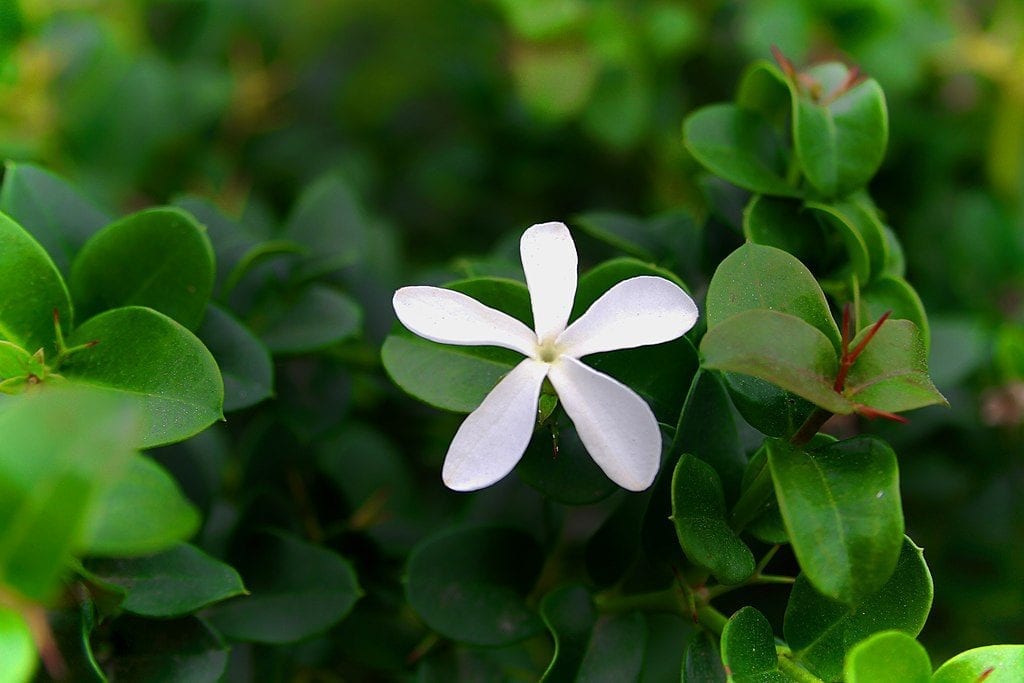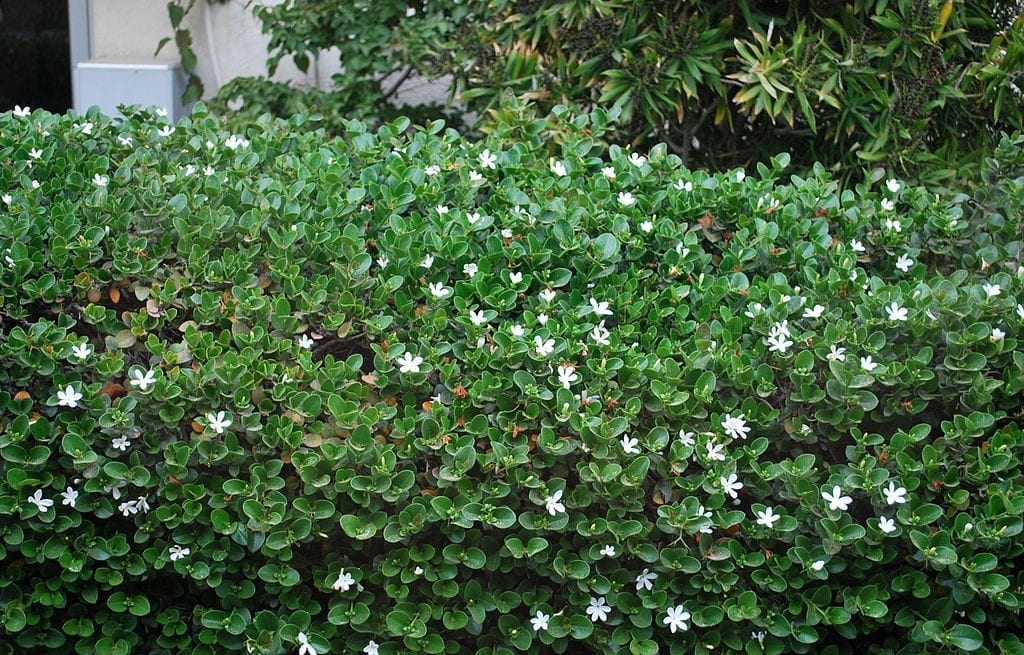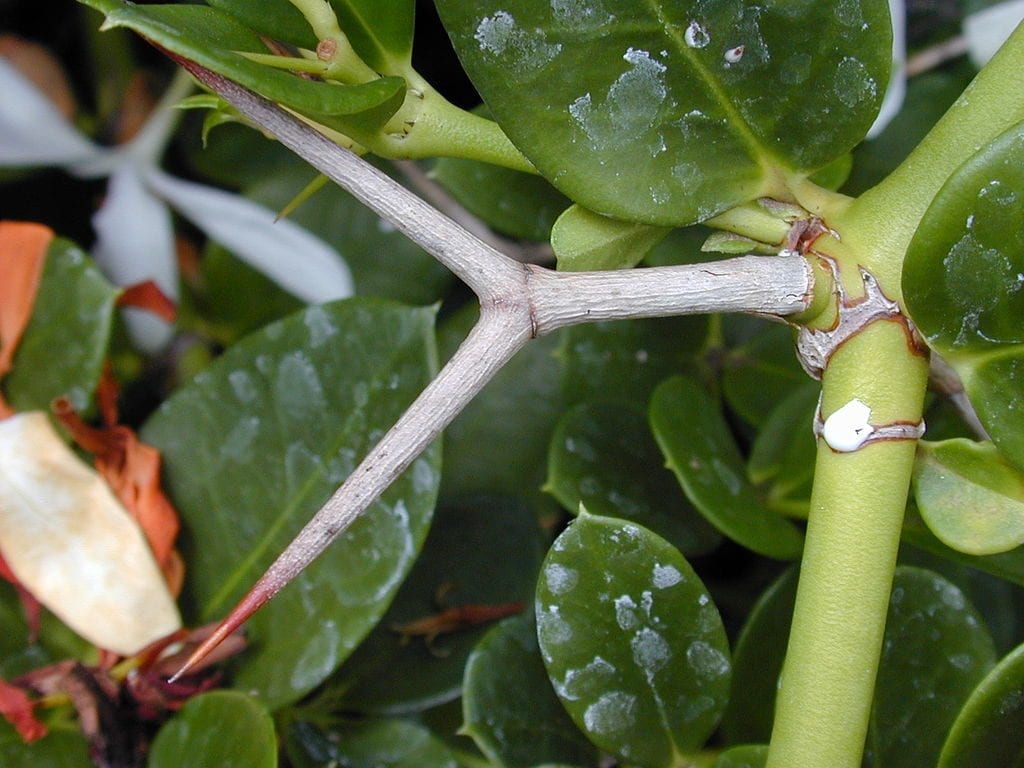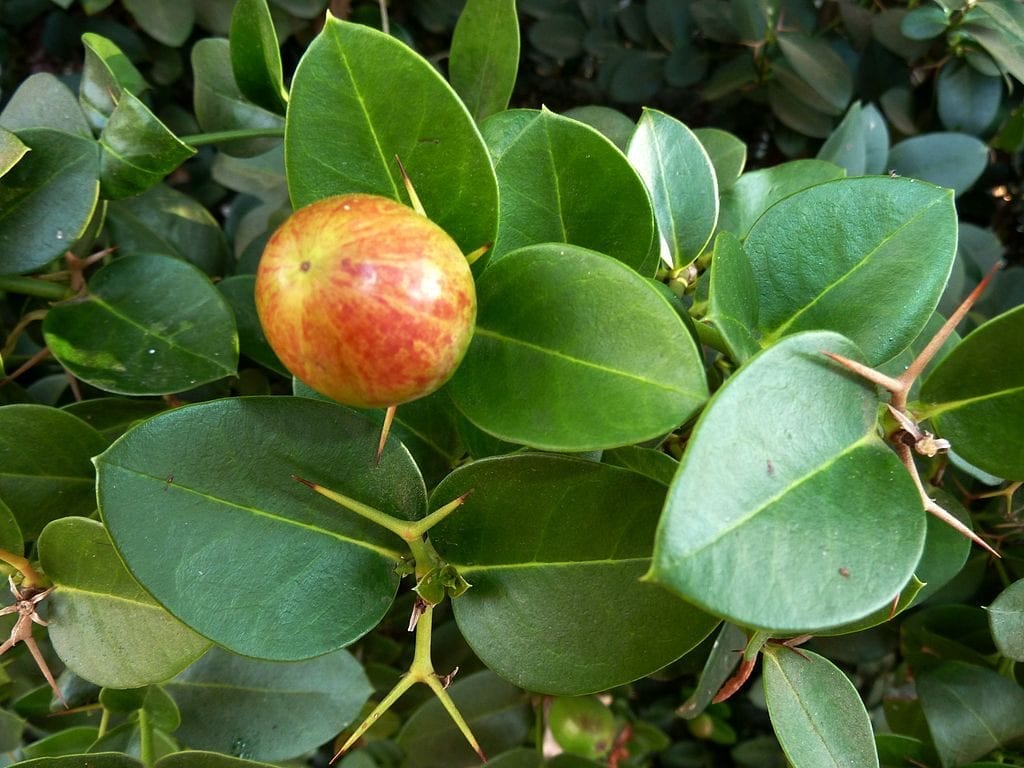
Image - Codyorb
Shrubs are the plants that every garden needs to have a certain structure and order, but not all are suitable for all climates. The species that I am going to present you is especially suitable for those who live in warm regions without frosts or very mild. Your name? Carissa Macrocarpa, which produces flowers with great ornamental value.
Unlike others, this is a bushy plant with an easily controllable growth rate being rather slow, so that getting the desired effect in your favorite corner of the home will not be complicated with it. And less after what I'm going to tell you ...
Origin and characteristics

La Carissa Macrocarpa, popularly known as carisa or Natal cherry, is a thorny evergreen shrub native to Africa, specifically from Mozambique and South Africa to the Eastern Cape. It grows to a height of 2 meters, and inside it contains a white latex that causes irritation on contact with the skin, especially if it is injured.
The leaves are opposite, ovate in shape and 1,5 to 7cm long by 1-4,5cm wide. The flowers, which sprout in spring, are grouped in white, scented fascicular inflorescences. The fruit is subglobose or ovoid and fleshy.
What are their cares?
If you dare to have a copy, we recommend that you provide it with the following care:
Location

Image - Wikimedia / Forest and Kim Starra
La Carissa Macrocarpa is a plant that It must be outside, in full sun. As it does not have invasive roots, it can be, for example, near the pool or the wall without problem.
Earth
- Flower pot: it is advisable to apply a first layer of about 5 centimeters thick of perlite, arlite or similar, and then universal culture substrate.
- Garden: grows in well-drained soils (you have more information on this topic here), also near the coast.
Irrigation
For it to have a good growth it is necessary to water it regularly throughout the year, although it is true that the frequency will vary depending on the season in which we are. From the start, we have to know that in summer we will give it water often because the earth dries quickly, while the rest of the months, especially in autumn and winter, this contribution of water will be more scarce.
So so that there are no unpleasant surprises or scares, what better way than to check the humidity of the soil before watering. This will not always have to be done, only until we have already acquired the necessary experience to know more or less when to take the shower. To do this, we will do any of these things:
- Insert a thin wooden stick to the bottom: if when we remove it we see that it comes out with a lot of adhering soil, we will not water.
- Weigh the pot once watered and again after a few days: we will notice that the humid earth weighs somewhat more than the dry one, so this difference in weight will serve as a guide to know when we have to add water and when not.
- Dig about 5cm next to the plant: the earth acquires a dark color when it is moistened, so if at that depth we see that it is darker than at the surface, and if above all we notice that it is fresh, we will wait a little to water again.
But ... what if we still have doubts? Well, if this happens we can do the following: water about 3 times a week in summer and every 4 or 5 days the rest of the year. Now, let's always think that if for example there is a forecast of rain, the ideal thing will be to do nothing more than wait a little until the soil dries.
Subscriber
From early spring to late summer we will pay the Carissa Macrocarpa with Organic fertilizersand guano. As it usually has chlorosis problems, we will water it once every 15 days with iron chelates, or with water that we have previously acidified by adding the juice of half a lemon to 1l of the precious liquid.
Multiplication

Image - Wikimedia / JMK
Multiply by seeds and cuttings in late winter. Let's see how to proceed in each case:
Seeds
The step by step to follow is as follows:
- First, you have to fill a seedbed tray (better if it is forestry) with universal growing substrate.
- Then, it is watered conscientiously, moistening the substrate well.
- Afterwards, a maximum of two seeds are placed on the surface and covered with a thin layer of substrate.
- Then it is watered again, this time with a sprayer, and we proceed to sprinkle with copper or sulfur (as if adding salt) so that the fungi do not harm the seeds.
- Finally, the seedbed is placed outside, in semi-shade.
If all goes well, they will germinate in up to two months.
Cuttings
To multiply it by cuttings, cut a branch about 40cm long, impregnate the base with homemade rooting agents and plant it in a pot with vermiculite (you can get it here) previously moistened with water.
They will issue their own roots in about a month.
Planting or transplanting time
We will plant it in the garden in spring, when the risk of frost has passed. If we have it in a pot, the we will transplant every 2 or 3 years, also in the aforementioned season.
Pruning

Image - Flickr / Forest and Kim Starr
It is pruned at the end of winter, with scissors previously disinfected with pharmacy alcohol. We will remove dry, diseased, weak or broken branches. Likewise, it is necessary to take advantage of to cut those that are growing excessively.
Rusticity
Resists cold and frost up to -3ºC, although it lives best in hot climates.
What did you think of Carissa Macrocarpa?